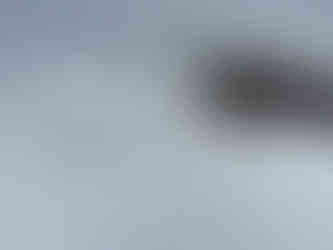Climbing Mt Rainier: A Week of Wildness - Part 2
- Greg Luesink
- Jun 8, 2023
- 7 min read
Updated: Mar 26, 2025
TLDR: I encountered the my limits of recovery after 3 last minute trips and not a ton of sleep between. Sleep is important, to say the least. Here's how Part 2 unfolded.
If you haven't read Part 1, you can read that here:
Two days after Climbing Dairyland with Mike I was back working at Mt Waddingtons, now Wednesday June 7th. My friend Blake texted me asking to borrow some gear, so I brought it to work. When Blake arrived, I asked him where he was going. He said:
I'm driving down to climb Mt Rainier with Anthony, leaving in a few hours and hiking by 2 am. Think you could join?
I started mulling over the possibility. If I could get someone to cover my shift, I could go. So, I talked to my boss, Sam Waddington, and he said I should 100% go for it and he would cover my shift personally.
With that, I told Blake that my shift was covered, and Blake let Anthony know that I could come. I raced home and packed my gear. Blake picked me up and we left Chilliwack at around 3 pm towards Seattle. On the way, we picked up some snacks from Save On Foods to fuel our endeavor.
At the border, our guard was quite abrasive, and he wanted to look in the back seat of Blake's truck full of gear. He pulled up a bag of wine-gummies and declared "this looks like edibles, are you bringing drugs across the border?!!" Blake tried to calm him down and he eventually relented and dropped it with a warning to not buy from the bulk section. When Blake said that we were driving down to climb Rainier that night and coming back the next day, the guard laughed in our faces.
There's no way you are going to climb Mt Rainier in a day. It cannot be done.
Watch us, we both thought as we drove past.
I'd summited Mt Baker a few week's prior with Blake and Anthony, which was a 13 hour hike covering 30km and 2,500m of elevation gain. The top is nearly 3,300m or 10,000+ ft, but we didn't feel the effects of altitude.


Mt Rainier is another 1,100m higher than Mt Baker, at nearly 4,400m (14,400 feet). I later learned from a pilot friend that Cessna pilots aren't allowed to fly that high due to the effect on breathing. At the time, I had no idea what to expect as we drove down, just that this would be a lot bigger than Baker and we'd probably feel the effects of altitude. As we drove out of Seattle, we saw a monolithic mountain rising up on the setting horizon. Mt Rainier, the queen of the Cascade Volcanoes.
Blake and I arrived at White River Campground below the Emmons route around 11 pm and sorted our gear with Anthony, his wife Liz, and skiers Wyatt and Sam. Anthony, Wyatt, and Sam would be one rope team on skis, while Liz, Blake, and myself would be the other rope team on foot. After bags were packed, we restlessly sat in the car trying to sleep until 2 am.
I barely sleep a wink.
The Ascent
We set off at 2:30 am up the trail. This time, unlike for Baker, I was wiser and brought trail runners to prevent blisters while walking on the trail. Rather than wear my stiff mountain boots the whole time, I planned to swap footwear at the snow. I couldn't help but admire the trail work as we charged up the well-maintained paths and bridges towards the toe of the glacier. Water diversion channels were everywhere, preventing erosion. Let's just say Chilliwack certainly doesn't receive the same funding as Mt Rainier! After two hours, we reached consistent snow and swapped to mountain boots and the ski crew snapped into their skis. Not long after, the sun began to peek over the horizon. At 4:30 am, I was in a light shirt and quite warm... slightly disconcerting conditions to be climbing snow in this kind of heat. But, Anthony didn't seem too worried, and he'd climbed Rainier 10+ times already.
After 4.5 hours, we reached the classic camp for overnight summit teams, just below Steamboat Prow. We were at ~2,800m already, nearing the height of Baker, and 1,600m was left to climb. Looking up at the massive glacier above, we could barely see little ant teams tracing a path through the crevasses.
The ripples in the snow were mesmerizing, forming waves in the frozen ocean of ice and snow. It is both beautiful to behold and terrifying to imagine falling into a large crack. As we descended a short ways to the glacier, we prepared to rope-up for the rest of the ascent.

Climbing a glacier is pretty repetitive, and blindingly bright in the sun. I'd learned on Baker to sunscreen my whole face, even up my nose to prevent a burn (unfortunately, I later discovered that I forgot my eyebrows... they got quite burned).
We navigated around the crevasses, and gingerly crossed snow-bridges as we climbed higher and higher. Eventually, the snow hardened, and Blake and I ditched our snowshoes. By the time my watch altimeter read 3,700m, our breathing was noticeably more laboured, and we stopped to take more breaks. Kneeling on the snow and panting, my eyes drifted to the immense ice sculptures around us. Towering blocks of snow marked the crumbling surface of snow, and crevasses lurking nearby.
The final 3 km to the top took nearly 3 hours as we gasped for air and fell to our knees after stints of 10 steps or less. In humbling fashion, we staggered and swayed up the relentless snow.
As a nerdy physiological aside, it was interesting to see in real time what I learned in my 4th year physiology classes during my Kinesiology degree. As we go higher, it's not that the percentage of oxygen changes. Rather, the air pressure decreases as altitude increases, which influences the pressure gradient between the air in our lungs and our bloodstream. We rely on a pressure gradient for oxygen to cross from our lung's alveoli into the capillary system, where it bonds to hemoglobin and is transported to cells to be used during aerobic metabolism to provide energy for our exerting muscles. With lower air pressure, less oxygen is pushed into the bloodstream, which means less oxygen can be delivered to muscle cells, leading to fatigue, shortness of breath, and lower physical output with higher perceived effort. This also leads to less oxygen supply to the brain, which can lead to headaches. The whole team felt the effects of the low air pressure as none of us had acclimatized by sleeping at a higher elevation. Sleeping at a high elevation gives the body time to produce more red blood cells (hematocrit), which can offset the low air pressure by providing more binding sites for oxygen. This reduces altitude sickness symptoms and is an advantage of overnight trips at altitude. Because we were at sea just over 12 hours prior, our bodies were forced to acutely adapt by increasing heart rate, blood pressure, and breathing rate to deliver as much oxygen as possible to our working muscles and brain.
Eventually, we neared the summit plateau of Mt Rainier, and just when we thought it was over, we faced another small hump to surmount. But finally, we caught up to the ski team and were standing on top of the world at 4,392m or 14,410 feet!
The Descent
I took a nap for a bit on the summit, but Liz was pestering us to get down the mountain, and rightly so. Weather could roll in at any time and make it much harsher conditions to safely move. And just like that, a cloud formed on the summit, and we were completely socked in as we neared the crevasse-ridden lower glacier. The ski team had left the summit perhaps 30 minutes before us and they missed the fog. Wyatt captured a wild photo of a gaping crevasse with Sam and Anthony just below it for scale. In a brief moment of sunlight, I snapped a photo in the fog of what I think is the same hole... but I didn't get so close. My Garmin watch's GPS came in clutch and I used it to navigate us back through the maze of crevasses in the dense fog.
Eventually, we dropped below the cloud level, and Blake and I grabbed our snowshoes. We stayed roped up until just before Steamboat Prow, where visibility was good and crevasses were fewer. However, it was a little unnerving jumping over some of the holes, even if they had solid snow bridges to cross!
From Steamboat Prow, we butt-slid down the snow quite a ways - almost as good as skiing! We eventually reconvened with our stashed shoes and walked down the trail. At a much lower altitude, I started to feel much less fatigued, but Blake readily reminded me of how we got our butts kicked mere hours before. We got back to the truck and drove to meet Anthony, who had gotten us all burgers. After that, Blake and I took shifts sleeping and driving the 5+ hours back home, arriving at around 1 or 2 am on Friday morning.
In total, we hiked 30km with nearly 3,200m of elevation gain in 17.25 hours from car to car. This was one of the most challenging days out physically and one of my proudest efforts, coupled with climbing Dairyland a few days before, which was one of my proudest alpine climbs and a 15 hour day in the mountains. Pushing my physical limits, I was curious: how much further could I go? Check out Part 3 below:
Click the photo below to get linked to the Strava activity:


































































Comments